Contra la Raza [Against Race], Matadero Madrid
–

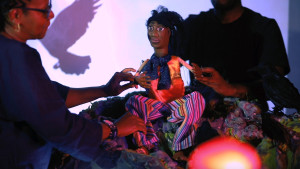
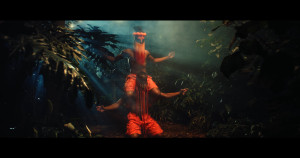
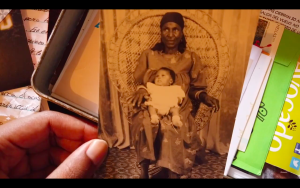
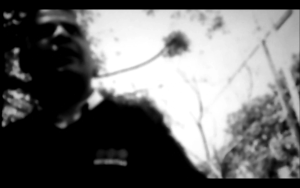
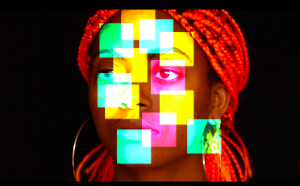



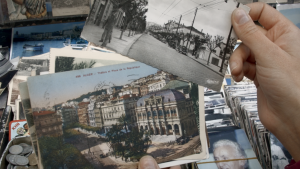

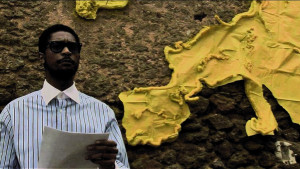
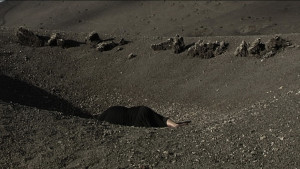
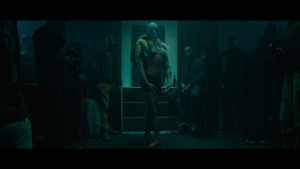


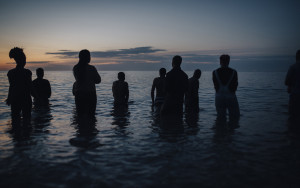


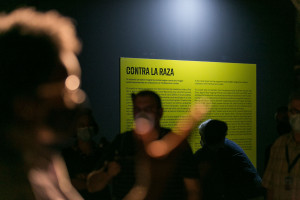
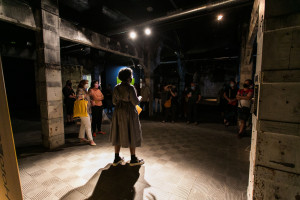
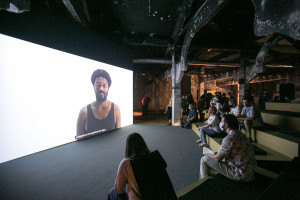
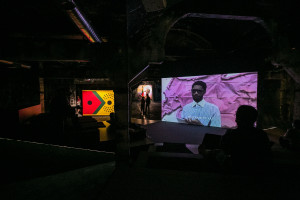
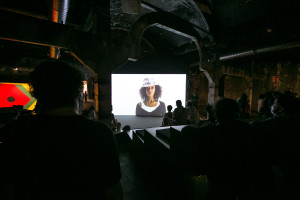
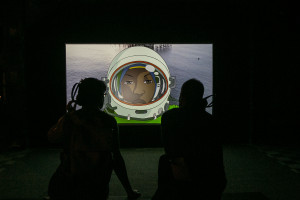
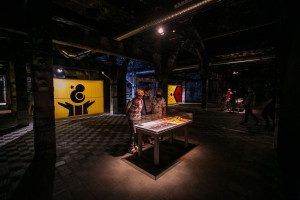
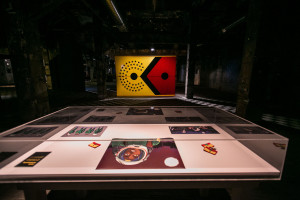
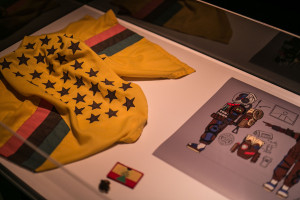
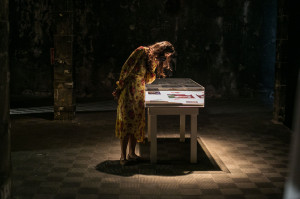
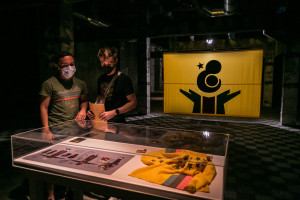
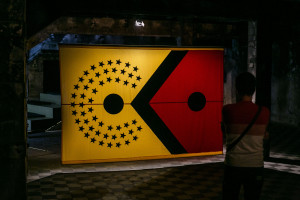
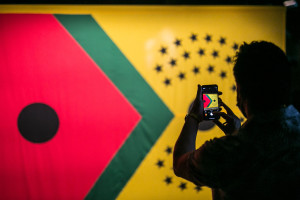
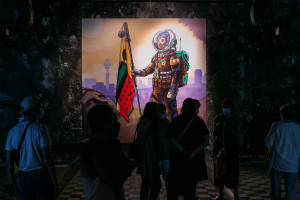
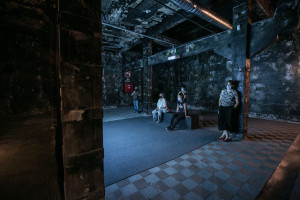
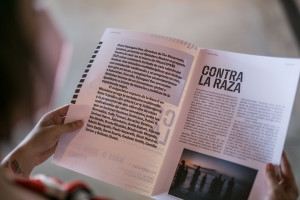
Within the framework of PHotoESPAÑA 2021, Guest Curator Elvira Dyangani Ose, Director of The Showroom, London, proposes the project Contra la Raza [Against Race] at Matadero Madrid. This multidisciplinary initiative incorporates a video-based installation and live programme focusing on futuristic imaginaries expressed through poetics of the Black experience that generate new forms of global and egalitarian humanism.
Matadero’s dark, soaring Nave 0 hosts a multimedia installation of Relic Traveller by Larry Achiampong, alongside a group screening of audiovisual works by artists including Ramone Anderson, Rubén H. Bermúdez, Sally Fenoux Barleycorn, Amartey Golding, Jérôme Havre, Julianknxx, Katia Kameli, Kiluanji Kia Henda, Grada Kilomba, Mónica de Miranda, Nástio Mosquito, Paulo Nazareth, Heidi Ramírez, Sara Sadik, Berni Searle, Cauleen Smith, Camille Turner and Belinda Zhawi.
From October 29 to 31, Matadero will host a live programme of screenings, talks, performances and live music. Amongst the unique screening events is Taxidermies of the Future curated by Paula Nascimento and Bruno Leitão which brings together works by three multimedia artists, Kiluanji Kia Henda, Grada Kilomba and Mónica de Miranda.
Contra la raza [Against Race] is curated in collaboration with The Showroom, London, with co-curator Katherine Finerty, and supported by Raúl Muñoz de la Vega. It is presented at Matadero Madrid with partners Intermediae and Cineteca Madrid. The Taxidermy of The Future screening is sponsored by For Arts Sake – FAS.
Conceived by the director of The Showroom London, Elvira Dyangani Ose, guest curator off PHotoESPAÑA 2021, Contra la Raza [Against Race] is a platform questioning how imagery in audiovisual formats communicates from a global Black and Pan-Africanist perspective. It is inspired by the eponymous book by British historian Paul Gilroy, Against Race: Imagining Political Culture Beyond the Color Line (2000), which addresses the fundamental role played by decolonial and antiracist movements in both the historical and contemporary fight for human rights. No one talks about human identity, he writes at the beginning of this century, appealing to our collective consciousness to advocate for the establishment of a new planetary humanism.
Paul Gilroy challenges the concept of a fixed racial identity formation as the signifier of blackness globally. Through this framework, he critiques how the phenomenon of myopic race-thinking, often imposed by external agents, generates a dominating global narrative that reduces a complex constellation of interconnected histories to a single, linear plot line. Departing from Gilroy’s quest to dismantle racialising and marginalising politics, Contra la Raza [Against Race] proposes a poetics for an emerging egalitarianism as a catalyst for holistic cosmopolitan democracy.
It is with this ethos of collective representation and gathering that audiences are welcome into the womb of Nave 0, to gravitate towards the illuminated projection and sit within the intimate amphitheatre, to spend time and speculate. On Tuesdays – Thursdays a four-hour screening will play throughout the duration of the opening hours, whilst on weekends this programme will loop twice, creating more possibilities for viewing, listening and making connections between the works. This installation brings together 16 videos by 18 artists from across the globe who all explore ideas of identity politics from a geopoetic perspective —from the individual to the collective, the domestic to the spectacular.
These reflections comprise the backdrop of Dyangani Ose’s proposal for PHotoESPAÑA 2021 hosted by Matadero Madrid and Círculo de Bellas Artes: two collective exhibitions, a film series and a live performance and talks programme all focusing on imagery —photography, film and video— from Black, global and Pan-Africanist perspectives. The Círculo de Bellas Artes will host Events of the Social: Portraiture and Collective Agency, an exhibition presenting works by more than 30 modern and contemporary African photographers and artists, alongside a set of historical and anthropological photographs belonging to The Walther Collection.
If anything connects the stories from Contra la Raza [Against Race] to its sister exhibition at Círculo de Bellas, it is the multiple, complex humanity that they exude —their desire to revive silenced and forgotten stories of the Black experience and the poetics concealed in the everyday lives surrounding these experiences. There is an imminent connection in their reflections of the dailiness of these realities —of common everyday tasks, of what is viewed as unmemorable for history— which nonetheless finds in visual art the occasion to be displayed, revealing the limits framing it in a reviled, one-sided narrative.
Beyond the hearth, Larry Achiampong’s Relic Traveller series serves as both a physical platform and a speculative landscape for Contra la Raza [Against Race], centring multidisciplinary approaches in telling decolonial narratives about identity, migration, technology, agency and imagination. Through two videos —the first in the series, Relic 0 (2017), and the most recent Reliquary 2 (2020)— activated by paraphernalia, conceptual imagery illustrated by Wumi Olaosebikan and fabrications from the second series of Pan African Flags For The Relic Travellers’ Alliance, this installation sets the stage for an immersive call and response between colonial ghosts to future progeny.
These films —the contemporary bookends to the Relic Traveller series thus far— are further activated by physical objects created throughout the project’s three phases. An old flag, four patches and two pin badges comprise a selection of paraphernalia, blurring the lines of reality and fantasy through documentation. These objects —authentic or fabricated?, ancient or futuristic?— reside amongst conceptual imagery illustrated by Wumi Olaosebikan for Reliquary 2, and passages based on Achiampong’s letters to his children, ‘Learning of My Fragility’, composed in direct response to their enforced period of separation during the COVID-19 pandemic in 2020.
Read Here: ArtReview: ‘Learning of My Fragility’: Artist Larry Achiampong’s Letters to His Children, 11 September 2020.
I can only write at nighttime these days, when most things
are asleep, on standby, still, numb, dead.
So much of life feels slow lately – it might seem odd, but my
body is glad.
As I write this letter to you two, y’all are likely laying, dreaming,
as youngsters should.
And I smile, thinking about all the kinds of possibles and
parallels that await yourselves.
But I cannot hold those thoughts for long, they keep getting
interrupted.
My mind is dizzying out and I’m traumatised at the imminent
dangers we face.
All of a sudden so many of the comics or videogames I’ve
consumed feel evermore prophetic to what is happening now.
Relic 0, the prelude to the series, is a short film that moves between African and Western based vistas and focuses on specific architectures of colonialism as delivered by an anonymous narrator. These discoveries deliver poetic moments of the sublime met with increasingly harrowing tales of trauma —speaking to the sinister way that states of anxiety, fear and displacement are both generated and policed in postcolonial society. The throb of the electronic score and ringing clarity of the narrator’s testimony usher in a new landscape and temporality, born from cracks in a traumatised, apocalyptic present.
Reliquary 2, meditates upon a period of separation between Achiampong and his children, where the artist observes his own familial narrative and trauma of forced isolation within the unprecedented framework of the pandemic. Speaking directly to his children, it is an archive of contemplative prose and a historical record during what has been a surreal and challenging period for many. Ancestry and familial relationships are integral to the artist’s examination of postcolonial identities. Previously he has revisited memories of the past with his mother, whereas this piece is consciously projected towards the future, using the present to provide and shape a dialogue with his progeny. In engaging in this form of intergenerational dialogue, the experiences of the present are regarded with a consideration that has been historically absent in the treatment of our ancestor’s narratives.
Relic Traveller: Phase 1, 2 and 3 is created by Larry Achiampong and produced by Nephertiti Oboshie Schandorf
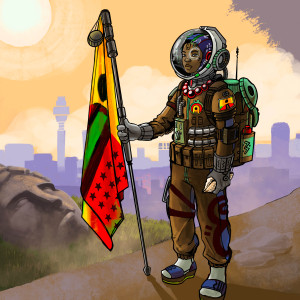
Finally, flanking the central transcept at the heart of Nave 0 are two flags from the second series of Achiampong’s Pan African Flags For The Relic Travellers’ Alliance. The first series included four flags that highlight African diasporic identity through ‘community’, ‘motion’ —technology and the speed of darkness—, ‘squadron’ and the human figure in ‘ascension’. Those designs each featured 54 stars that represent the 54 countries of Africa. While the colours green, black and red reflect its land, its people and the struggles the continent has endured, respectively —as previously enacted by artists such as David Hammons and Faith Ringgold. The field of yellow gold represents a new day and prosperity.
Continuing from this tradition, in the second series of four additional flags Achiampong has generated new symbolic constitutions, two of which are featured here including What I Hear I Keep, related to the act of sending and receiving messages that resonate, and Mothership, in praise, honour and respect of the centre of community: Black Womxn.
According to Larry Achiampong, ‘The flags culminate icons moving towards unity and equilibrium. The work does not frame Pan Africanism as a utopian vision of the African continent, but one that considers aspects of responsibility in relation to the hidden tremors of history.’
With this reflection in mind, Contra la Raza [Against Race] seeks to provide a space to cross time zones, geographic borders and ancestral generations —a call to action in order to foster a communal understanding of what cross-culturalism means today.